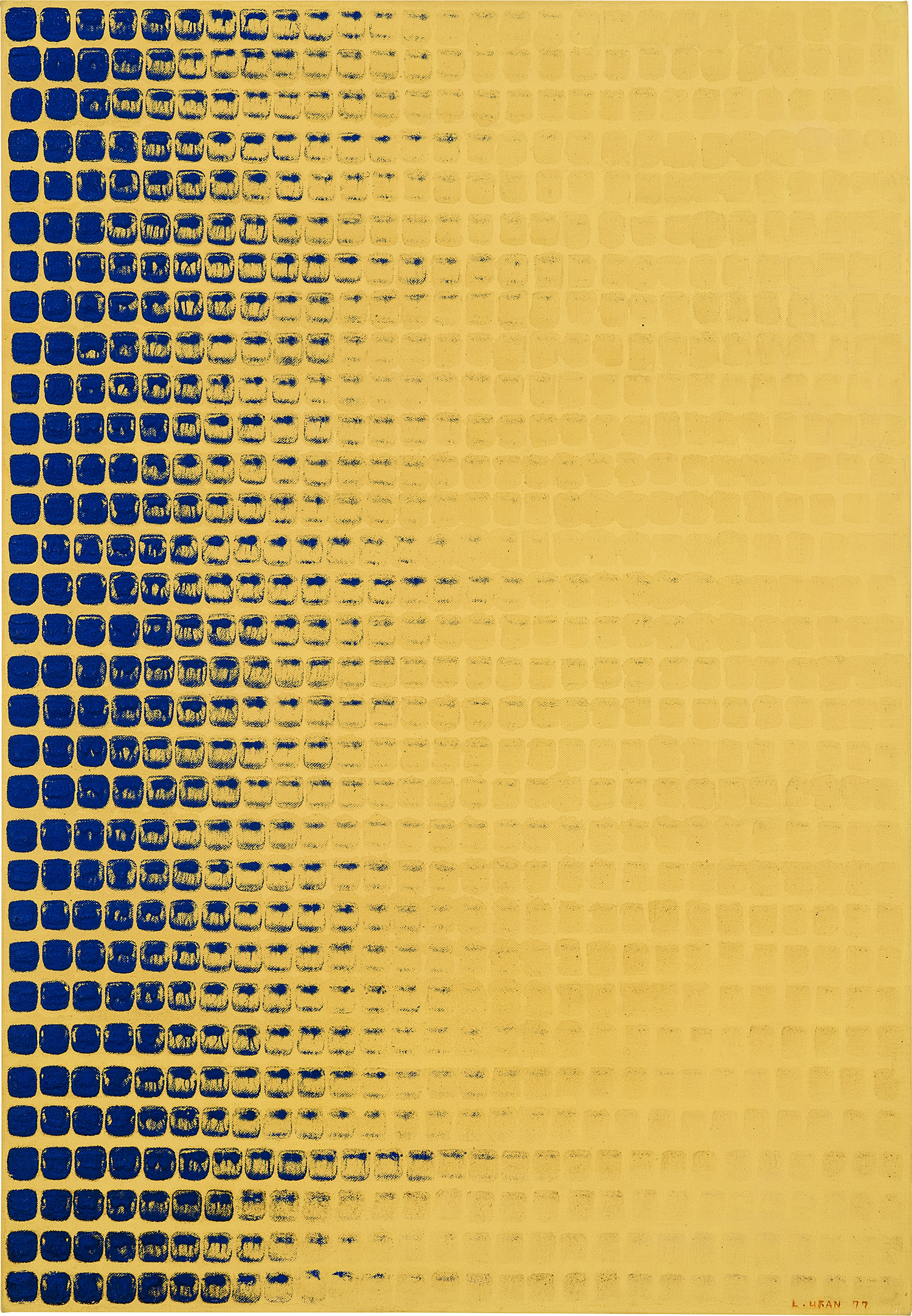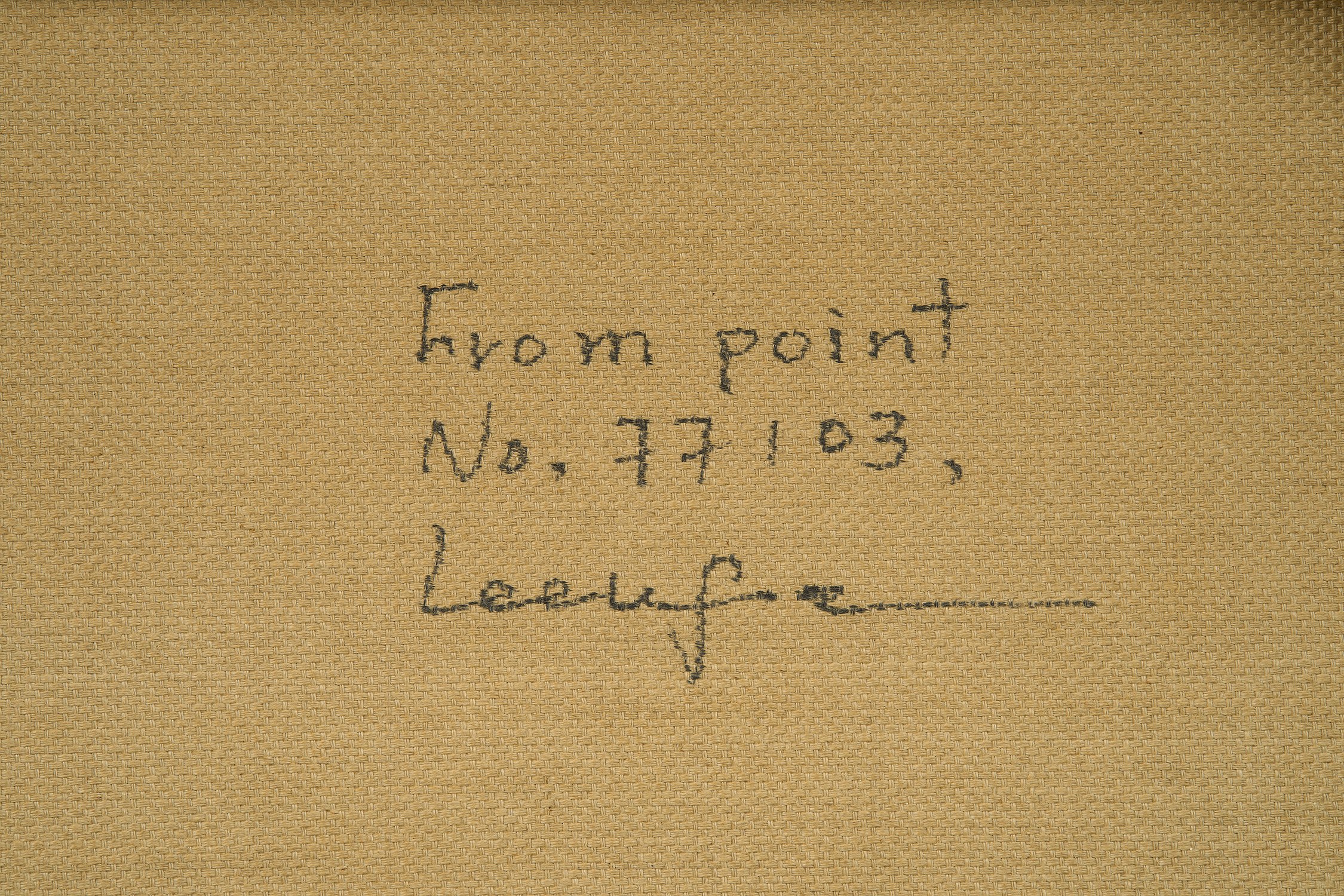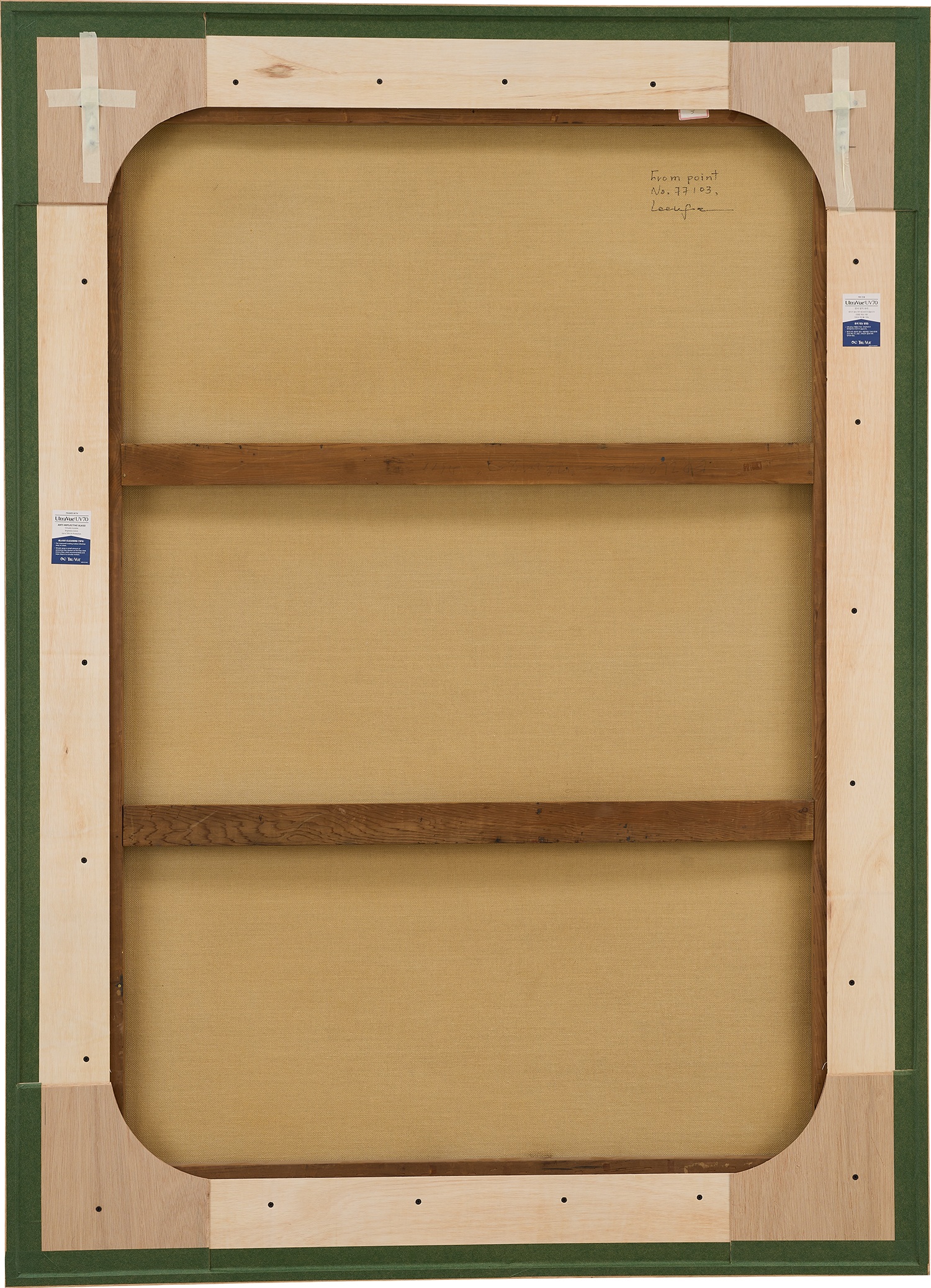













PROPERTY FROM A DISTINGUISHED ASIAN COLLECTOR
13Ο◆✱
Lee Ufan
From Point No. 77103
signed and dated 'L. UFAN 77' lower right; further signed and titled '"From point No. 77103" Leeufan' on the reverse
oil and mineral pigment on canvas
162.2 x 112 cm. (63 7/8 x 44 1/8 in.)
Executed in 1977, this work is accompanied by a certificate of authenticity issued by LVS Gallery.